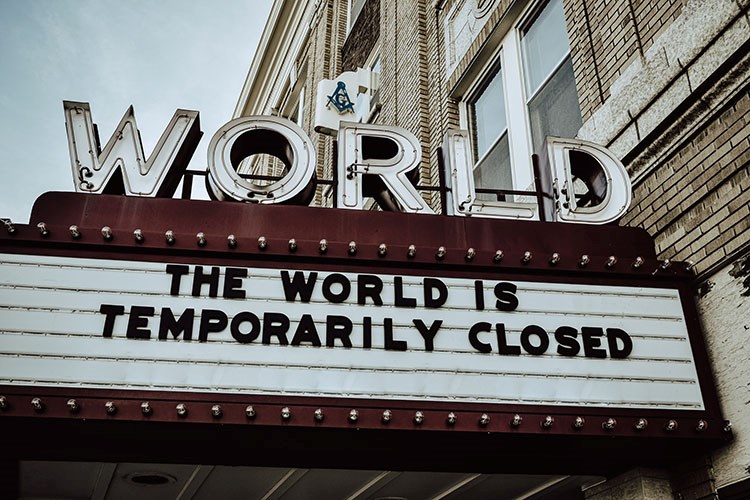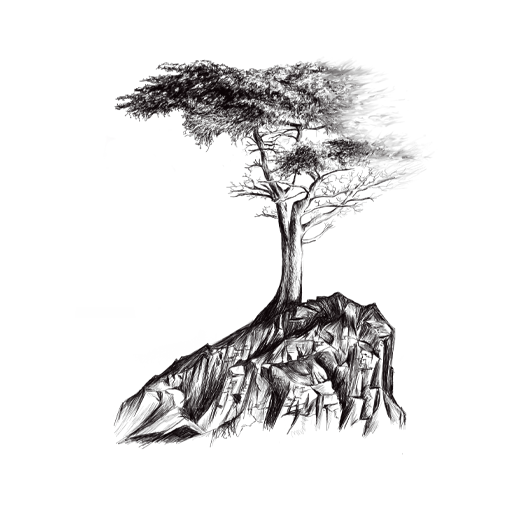COVID-19: Getting to the New Normal

How we transition from the “Safer at Home” policies to the restarting businesses, schools, and for many life in general.
Good crisis management and response focuses on both responding to the crisis (managing the consequences) and on planning the recovery (transitioning to the new normal). For many the response to COVID-19 seems to be reactive and a little late. After several weeks of restrictions and safer at home polices people are getting restless and want to know what is next. That is a hard question, but like many things in crisis management we can look to the past for lessons and predictable next steps.
In 1999 The World Health Organization, developed what they called the Pandemic Phases. They were updated in 2005. Health Departments and Ministries around the world also adopted these phases. The chart below highlights the phases from the H1N1 in 2009.
On the WHO scale it is safe to say most countries are in Phase 5 or moving from Phase 5 to 6. Post Peak phase is next. The WHO defines that as “pandemic disease levels in most countries with adequate surveillance will have dropped below peak observed levels. The post-peak period signifies that pandemic activity appears to be decreasing; however, it is uncertain if additional waves will occur and countries will need to be prepared for a second wave.”[i]
This means that planners, at all levels – private and government, need to be thinking about and organizing for how we transition from the safer at home policies most have adopted to the restarting of businesses, schools, and for many, life in general. Here, the WHO does not really provide any information, and in fairness it is not their remit to.
However, Dr. Gerald Parker[ii] has spent 36 years in biodefense, including Command of the US Army Medical Research Institute of Infectious Diseases (USAMRIID). USAMRIID along with the CDC are considered a gold standard for dealing with infectious diseases. Dr. Parker has further defined the stages which are far more helpful to planners. His thoughts recently appeared in a Houston Chronicle article. [iii]
Stage 1 is containment. For most countries this started when they declared Public Health Emergencies. Containment failed in that the virus spread throughout communities, regions and countries.
Stage 2 is mitigation. What I call “managing the consequences” of the virus. Here there is a lot. First, it is slowing the spread of the virus down. Secondly, it is caring for the sick and managing the deceased. Concurrent to that it is also addressing the economic impact – stimulus packages, salary protection. Many countries are currently in this stage.
Stage 3 is containment or re-containment. In that communities have gotten the virus under control, not eradicated, but individual cases are quickly isolated, and wider community spread avoided.
This stage is where some cities and even some countries are now. Consequently, many are calling for things to go back to normal or for the lifting of restrictions. First, things will never be the same “normal” again. There will be a new “normal,” one we will adjust to and one that we should transition to. This can be a very dangerous time in that it may offer a false sense of security to people and governments. Move too slowly and economies are further damaged, some for years. Move too quickly – lift all restrictions, and people will ignore warnings, guidelines and push boundaries. Potentially we are right back at the beginning with widespread transmission of the virus. Except this time our medical personnel and supplies are exhausted, and the death count likely higher.
Now is the best opportunity for governments and businesses to plan and discuss a sensible transition. Set expectations and tell people what to expect. As part of this process, certain criteria should be met at the very beginning. These criteria and how they will be accomplished should be explained, along with expectations on how they will be completed. Some will begin before others and that is okay given restrictions on movement from home areas.
- Wide scale, fast, reliable testing process is needed so new or reemerging cases can be more quickly identified and isolated. Accessible testing will also help with understanding immunity and reestablishing accurate numbers.
- Recovery of public health services to sustainable levels. This means open hospital beds, available critical care units, and needed staff reporting to work, with appropriate time off. This also includes re-supply of equipment, consumables like personal protective equipment and pharmaceuticals
- Consistent delivery / sourcing of cleaning, sanitizing and personal care supplies for businesses and public. These supplies are still extremely limited.
Once those criteria are met then a reduction in restrictions and a much wider scale transition should be begin. Given the current trends I would expect this process, if it starts now, to take through July or August 2020 to complete. I expect governments will approach this with:
- Plans for increased cleaning of public open spaces, focus on reducing any community spread.
- Phased openings of retail non-essential businesses. Such as hobby or general retail stores.
- Phased openings, perhaps using a lottery system for gyms, restaurants, bars, entertainment venues, and museums or amusement parks, all places or activities that are hard to limit community spread. Business will likely be required to certify
a. Cleaning of the premises
b. Plans for increased cleaning
c. Limits on numbers of peopled.
d. Tracking and screening of staff to ensure sick employees are quickly isolated - Phased openings of schools, with a mix of classroom and distance learning, starting with the upper grades first and progressing to the lower grades.
- Allow elective medical care, routine and elective treatments with increased requirements for PPE and sanitation.
As those opening progress and without additional outbreaks, I would then expect to see:
- Encouragement or openness of movement, from local to regional to national travel. I also expect people will generally “test the waters” in their own countries before further travels. This will of course place a greater burden on tourist destinations, who must be prepared.
- Phased opening of borders and passenger air routes, including international travel.
- Modifying cruise line sailing prohibitions – starting with smaller vessels first, and likely placing additional burdens on cruise operators.
Finally, a key indicator will be the scheduling of travel related events such as destination weddings, family holidays, graduation ceremonies and trade conferences. Although I would not expect that to occur until 2021.
A phased approach during this period (Stage 3) will also allow the healthcare system time to develop better treatment of those who contract COVID-19. Improvements are being made and more learned about the virus daily. It will also be during this stage that a vaccine is hopefully developed. Currently there are 70 vaccines under development, and three have progressed to human / clinical trials. However, it will realistically take 12 to 18 months before an effective vaccine can be produced and distributed in useful numbers.
There is a lot we don’t know. For example, can the same person catch the virus twice? Both China and Korea have reported these, but it is not known (because of testing process) if these are new infections, or lingering infections. Nor we do know if a truly large number of people have had the virus but showed no symptoms. Improved testing and research may answer these questions, but not quickly.
Because of this, it is possible for a resurgence of the COVID-19, and frankly, given historical patterns of influenza viruses, a likely resurgence of infections in the fall. As such, it is important that the planning is open and transparent so that people will give the system time to be better prepared and ready. Lack of planning or transparency is incredibly unsettling. Eventually people will get tired of the uncertainty or unknown. Then the transition to our new normal will be disorganized at best and at worse throw us right back into the WHO Phase 4 of sustained human to human transmission.
After a vaccine, we reach Stage 5 (Dr. Parker) or Post Pandemic Phase (WHO), which means preparing for the next pandemic. Yes, there will be another one. COVID-19 is a large-scale pandemic like those of 1918, 1957, 1968 and 2009. Each time the response has been improved. However, the memory of the more recent pandemics has been short lived, followed by a rush to move on. This time, I expect a different response from governments. Specifically, I expect that countries improve development and the inclusion of PPE, key medical devices and pharmaceutical products as important national defense industries. In doing so there will be less reliance on foreign production. The development, manufacture and supply will be more nationally regulated, more items produced at home and percentage of foreign ownership limited.
I also expect that in addition to consumer action (how consumers spend money) there will be regulatory action by government for the air / cruise industry. Changes such as:
- Aircraft / ship passenger density
- Increased interior surface cleaning & validation of cleaning
- Pre-travel health checks / denied boarding
- The ability to better track passengers after travel, including seat assignments during travel
Additionally, for the cruise industry I expect that recent regulations regarding operators’ requirement to provide ship-based quarantine and treatment will expand to include plans for larger treatment areas, long term resupply of vessels without a port and robust onboard testing and isolation process.
Crises can be individual in nature, collective or combined. Individual ones are limited. Most people don’t personally know someone who was directly affected. Collective crises are when many know someone who is directly affected and those that don’t are impacted in, they may be afraid, there is uncertainty and change in habits and routines. They may not even have geographical proximity to the crises. Combined crises are the worst case. It is likely many people know someone is sick or who has died, and across the globe it would be hard to find someone who has not had to alter their routine or life because of COVID-19. Humans are resistant, and we will survive. We are, however, also anxious and want to be in control. Having an understanding of what to expect and a plan goes a long way in alleviating anxiety and gaining a sense of control.
Download a PDF of this Article Here
[i] https://www.who.int/csr/disease/swineflu/phase/en/ Current WHO phase of pandemic alert for Pandemic (H1N1) 2009
[ii] http://onehealth.tamu.edu/media/1994660/parker%20gerald%20bio%202017%20wlogo.pdf

